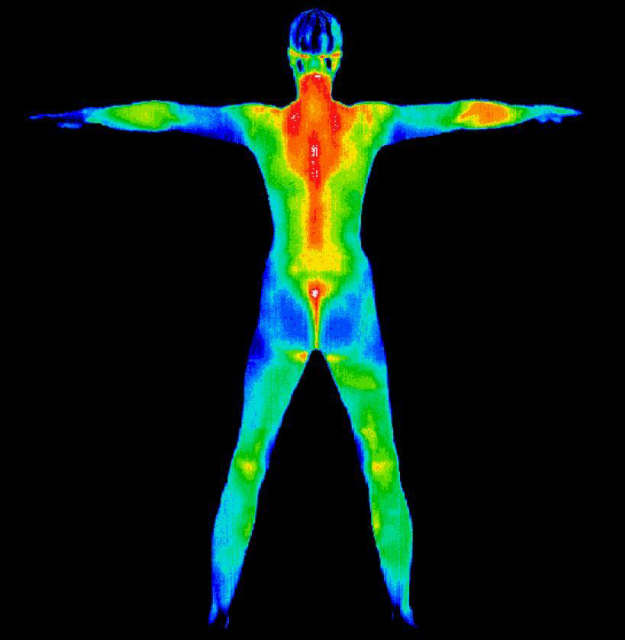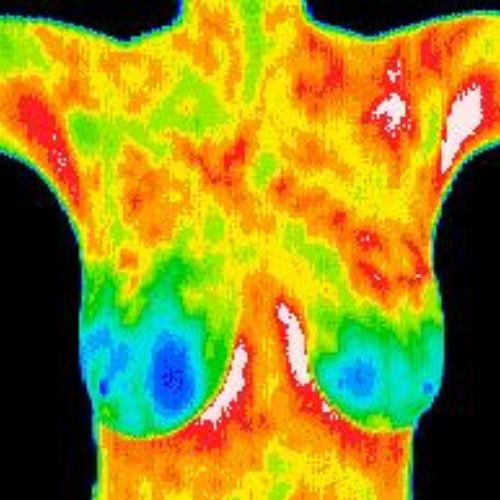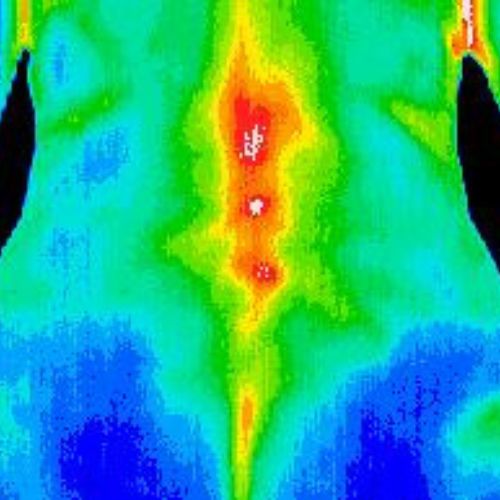Medical Thermography
Medical Thermography is a non-invasive diagnostic technique that allows the examiner to visualize and quantify changes in skin surface temperature.
Heat patterns indicate inflammation. Inflammation is a precursor to disease in the body.
Early detection of inflammation is critical – you can prevent or intervene in the process before it becomes a disease.
In addition, measuring inflammation consistently over time can also be very effective for detecting the status and severity of a medical condition.
How is Medical Thermography testing done?

An infrared scanning device converts infrared heat emitted from the skin surface into electrical impulses visualized in color (16 different pixels) on a monitor.
This visual image graphically maps the body temperature and is referred to as a Thermogram.
This 15 to 30-minute valuable procedure helps alert your Integrative Medicine practitioner to the possibility of underlying breast disease and other chronic illnesses, including heart disease, and digestive disorders.
What does a Thermography scan show exactly?
Pain in the body shows up as Hyperthermia (hot spots: red and white) or Hypothermia (cold spots: blue, purple, and black), indicating to the client and practitioner a vascular or nerve problem within the body.
The spectrum of colors indicates an increase or decrease in the amount of infrared heat emitted from your body’s surface.
Since the average body has a high degree of thermal symmetry, subtle abnormal temperature asymmetries can be easily identified.
What diseases can Thermography detect?
1. Breast and chest Cancer’s early signs:

The Medical Thermography test improves your chances of detecting fast-growing, active tumors in the intervals between mammographic screenings (or when mammography is not indicated by screening guidelines for women less than 50 years old).
Your breast thermograms are kept on record and form a baseline for all future routine evaluations.
Breast thermography does not take the place of mammography when a mammogram is deemed medically appropriate.
2. The mouth is the source of many worrisome ailments:

TMJ, infected root canals, and gum disease can be revealed through Thermography scans. As well as pinpointing the source of pain, Thermography can also monitor the healing process.
3. Heart disease, stroke, and high blood pressure:

Used as a preventative tool, Thermography can be an excellent resource for vascular problems and carotid arteries.
Thermography uncovers reduced blood flow caused by hardened arteries – a symptom of atherosclerosis.
This technology avoids radiation, risk, dye injections, and drugs so that our practitioners can prescribe reparation protocols before it is too late. If caught soon enough, harmful fibrous tissues and plaque can be restored.
Diet, lifestyle adjustment, supplements, and chelation detoxification go a long way toward avoiding surgery or stroke.
4. Arthritis:

Duke University has determined that Thermography identifies minimal temperature changes in joints which is the first sign of the inflammation accompanying arthritis.
The earliest inflammatory phase of arthritis shows clearly as heat; however, as the disease worsens, the joint temperature cools significantly because of joint disuse and lack of blood supply.
Therefore, monitoring arthritis with Thermography can help determine if your treatment is working to halt further deterioration of joint movement.
5. Diabetes:

If you have diabetes, our goal is to avoid dangerous complications.
Thermography is a prognostic and diagnostic tool for type 2 diabetes. It helps in the early detection of neuropathy and vascular disorder, and diabetic foot.
6. Pain syndrome from injuries:

Diagnosing pain syndromes is one of the lesser-known benefits of Thermography.
If you develop this difficult-to-diagnose syndrome, you may suffer from pain for six months or longer after an injury. Thermography helps diagnose sports injuries, sprains, inflamed tendons, and pain syndromes so that you can receive treatment.
7. Cancer:
Cancer and malignant tumors show on Medicine Thermography scans.
We can not guarantee that all cancer can be detected during your appointment. However, if there are cancer indications, we will conduct further tests to confirm the abnormality visible on the color digital image.
Is thermography painful?
No. Thermography is painless. It is like taking a photograph.
In summary
Medical Thermography’s role is to help with the early detection and monitoring of abnormal physiology and establishing risk factors for the developing or existing disease. In addition, when used with other diagnostic procedures, it assists in providing the best possible holistic health evaluation.